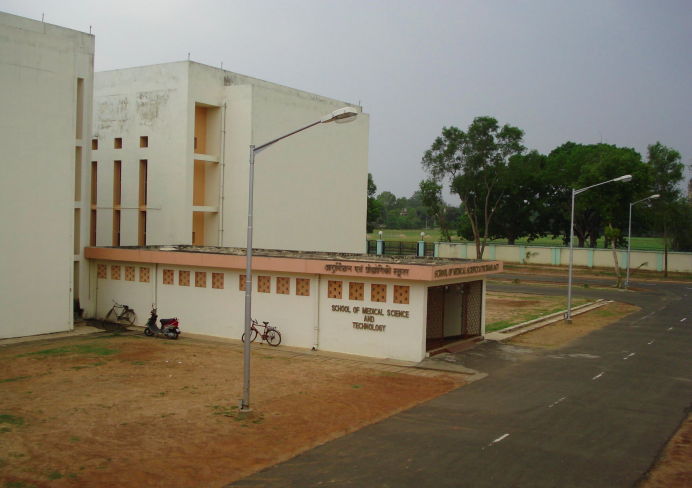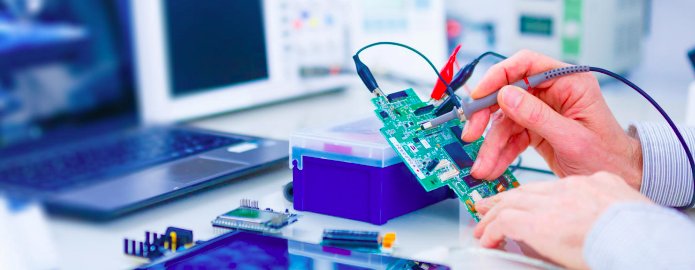Prof. Suman Chakraborty, who is the Head of School of Medical Science and Technology, IIT KGP and the Associate Dean at SRIC, IIT KGP spoke extensively about the necessity of having an inclusive approach to medicine and technology and how SMST is actually doing that.

Collaborations have quite often been the stepping stones towards the creation of top-notch products and groundbreaking discoveries. The idea of bringing the best of different facets for out of the box creations have always been fascinating. Similarly engineering and medical may seem quite exclusive from each other in technical science terms but the prospects of meshing them together for the greater good is envied although seldom discussed.
Development of the School of Medical Science and Technology (SMST) in IIT Kharagpur may raise a few doubts in the tech community as to how this equation makes sense in a technical way. In this read, you will see how the prospects of such collaboration are not just promising for technology but vital for medicine too.
The department started its journey in 2001 against a background where technology was progressively coming into the domain of the medical world. It was felt that a unique school or department should e established that would work at the interface between medicine and technology.
A medical school would be bothered about the clinical aspects of the study, not necessarily on the technology that goes behind medical devices. On the other hand, an engineering school classically is not equipped to take up that responsibility. An interdisciplinary department was thus created and, in fact, required. This is how SMST came to existence in 2001.
To see how engineering and medical science potentially go hand in hand, let’s consider a frequently tackled problem. A full-fledged portable medical system has long been desired in the medical industry for various demographic and geographic reasons. For instance, if a person staying in the outskirts needs to get a blood test for assurance, he has to travel to the nearest health center. This is a tedious and daunting task for people living in rural or remote areas. The travel costs, travails of a long journey, irregularity of the health center are just a few problems to mention.
This calls for the need of a portable blood tester which can be navigated locally to reach out to the concerned patient. Now the problem shifts from a macro to a micro level as the system that worked perfectly in the lab now has to work flawlessly on the field.
Power management is one of the biggest issues here as this is a portable system. Specialized movement of blood within the system through microchannels for further analysis requires in depth analysis of micro fluids. Color-specific computation of blood requires advanced image processing. Plus a real-time interface with a doctor might be essential in some cases for the final verdict.
An exponential rise in reach is one of the perks as with a huge chunk of data collected from a wide range of patients, big data can be used pry out deeper insights and develop a better understanding. As we can see challenges are enormous, but so is the scope of enhancement in medical reach out and research.
The flagship programme of this school is MMST or the three-year Masters in Medical Science and Technology, an interdisciplinary program, which is first of its kind in India. This is a unique program where medical graduates, i.e. MBBS, take up a course in medical technology.
Subsequently, an M.Tech programme started in medical imaging and informatics as a number of Faculty members were working in that area. Over the years, it was felt that medical technology-based work is not complete unless you have a clinical connection. Technological development should go from bench to bedside, that is, from the laboratory to the hospital. We also have to learn a lot from the needs of the clinicians who are actually serving the patients.
This year students were selected for the MMST program through a highly competitive entrance exam. These students are from a wide background encompassing chemistry, physics, and biology. They are not necessarily doctors. We have to understand that the entire support system in the medical world is heavily dependent on medical scientists who may not always be medical doctors by training.

For qualified doctors, a special programme has been started with Tata Medical Centre – a highly advanced certification programme on clinical oncology. 10 junior doctors have been selected from TMC this year who will be participating in an advanced research program. Doctors usually do MD, DM, etc. after graduating. But they can now undertake super-specialization in the niche topic of clinical oncology research with at least one supervisor from IIT KGP and the other from Tata Medical Centre. They are not required to stay on campus. There is a designated time during which they have to visit IIT KGP and interact with the faculty member and team supervisors.
Medical Science and technology is such an interdisciplinary area that people from all backgrounds can contribute. Even for MTech in Biomedical Engineering, there are no restrictions on the UG programme. Someone who has done mechanical engineering can take up biomechanics as a scope of research/Masters programme.
Someone who has done Computer Science can use big data analytics and machine learning to solve problems in the clinical setting. The thrust areas are Microfluidics and Point of Care Diagnostics, Multimodal Medical Imaging & Image Processing, Tissue Engineering, Regenerative Medicine, Stem cells and Biomaterials, and Signal Transduction, Proteomics and reproductive health, and Cancer Biology & Public Health.
There are already two notable affordable healthcare products developed by SMST. One is a paper-based microfluidic device which has small channels in the paper. Blood dropped in this device will go through the channels and react with reagents. A change of color will happen if there is a particular disease. The change of the color signal is recorded by a camera and this information is digitally processed.
In the case of blood glucose level, haemoglobin, bilirubin, these are calibrated against the image data and the information is transferred to a smartphone. These are inexpensive devices. Anyone with a pricking device can do this. This is called as ‘colorimetric detection’. The other product also uses similar technology. It is called a Lab on a CD.
By centrifugal force, the sample of blood, saliva or urine, whichever is being tested, will go radially outwards and react with certain chemicals. Here we are using electrochemical detection. The change in electrical signals or impedance will signal the result of the test. This is aimed to be implemented in extreme rural settings – places where there is no power supply or refrigeration. This will be a profound mark on care diagnostics.
Written by Aritra Biswas


